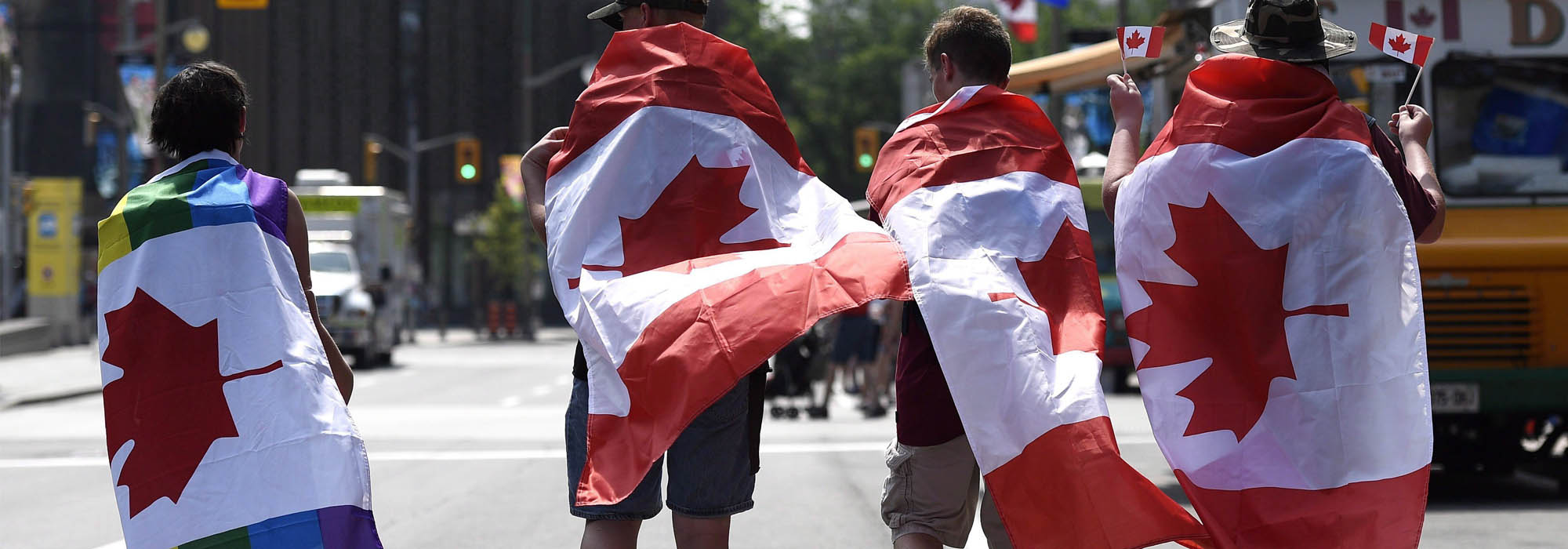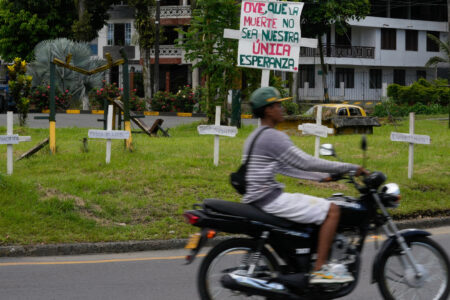
Somewhere along the way this month, I lost the thread of the current federal political dust-up. Is it about irregular border crossings? Immigration levels? Diversity? Identity politics? Racism? At this point, I’m reaching for the mute function on Twitter.
The core issue our politicians are circling around but just can’t seem to articulate is social cohesion. Keeping the people in this country generally united should be priority number one for these guys. And yet the more they talk, the less together they make us feel.
The crux of it is that rallying people is a positive exercise, and one that requires deliberate policy work and also some good old-fashioned communications work.
Today, there seem to be multiple areas where we are pulling away from each other as citizens, or are at risk of doing so. But there are rational discussions to be had and tools to be deployed.
Real barriers exist for racialized Canadians in landing employment. They face higher rates of incarceration and arrest. Systemic racism is not theoretical, and it keeps citizens apart. Promoting diverse workplaces — and legislatures — is one way to signal that we recognize the playing field is a long way from being level, and the effort also brings different people together, shoulder to shoulder. Criminal justice system reform is key.
At the same time, there are real issues around immigrant settlement and integration that cannot be ignored. If you talk to people in the settlement sector, you find they’re open about the challenges involved in supporting newcomers in their journey of adjusting to Canadian life, whether at school, in the workplace or just out on the street. Settlement programs require adequate financial support and coordination between different levels of government. Yes, we can talk about this.
The immigration policy analyst Andrew Griffith has written about the dynamic, non-linear nature of integration, which he equates to a jazz band that is improvising as it makes music. “A combination of push and pull between newcomers and the host society, mediated through political, judicial and everyday socio-cultural processes, finds an equilibrium point, which evolves over time,” he wrote.
The social fabric has gaping holes when it comes to settler-Indigenous relations in Canada. Recognition of treaty rights and the inherent right of self-government is a painfully slow process: the Royal Commission on Aboriginal Peoples report has sat on a shelf for two decades. The Indian Act, enacted during the 19th century, still suffocates communities. Indigenous children living on reserve continue to get less funding per capita for education and other social services than other kids in their province, and more children are going into the child welfare system than during the residential school era.
Income inequality is another strain on our common bonds. The looming changes to our workforce, and the ones already occurring because of automation, globalization and the gig economy, have become a major area of policy discussion around the world.
These are just a few of the challenges to Canadian social cohesion. What in the world can a politician do to keep us (relatively) together?
It’s a complex question, with many potential policy levers to pull, but three perhaps more straightforward, short-term solutions might lie with the communication of shared national symbols and touchstones; education policy; and support for news media, arts and sports.
Symbols might be more useful to discuss than “values.” National symbols are more of the lingua franca out on the street between strangers, and they generally entail less political hoo-ha. They’re what cause you to strike up a conversation with a random Canadian you meet while travelling. (Éric Montpetit, Erick Lachapelle and Simon Kiss published an IRPP study that emphasized that policy disagreements in Canada hinge more on value differences between people than on regional divides.)
National symbols are things that tend to make us feel Canadian even on a superficial level (and I acknowledge we could debate which symbols or rituals become dominant and why). Even my school-aged kids, who watch minimal cable TV and commercials, are well acquainted with Canadian symbols (and tropes). The YouTube megastar Lilly Singh, originally from Scarborough, Ontario, touches on several Canadian symbols in her video What Canadians Really Want to Say to Americans. (Never mind the Aunt Jemima syrup: she probably couldn’t locate the real stuff in L.A.)
Prime Minister Stephen Harper’s deliberate choice was to focus on what he saw as unifying national symbols: The North, the Canadian military, the monarchy and sports. Justin Trudeau’s selected symbols appear to be principally multiculturalism/inclusion and the redistributive economy.

There are others that can be mined: the wilderness and open spaces, bilingualism, universal health care, good manners, humanitarianism. (Who knows, perhaps one day we’ll consider a healthy nation-to-nation relationship between Canada and Indigenous peoples a hallmark of the country.)
Still, reinforcing recognizable and accepted symbols can go only so far in rallying us together.
Education is a critical component of fostering social cohesion. We need to understand each other; we need to know each other. This is why updating curriculums to teach our children about Indigenous culture and history is vital, and why school exchanges organized by such groups as the Canadian Roots Exchange are so effective in the long term. Ontario’s updated sex-ed curriculum (now reversed) was a way of helping children understand more fully the ways of being that exist in their school, community and country.
Education doesn’t exist just in grade schools. It can also occur online and through national advertising campaigns, and in the workplace. The previous government spent millions promoting its stimulus activities with Economic Action Plan ads. Money on this scale could be deployed with the goal of plugging more fundamental gaps in Canadian knowledge: around treaty rights and the legacy of residential schools, as just two examples. Initiatives such as the Gord Downie and Chanie Wenjack Fund help fund public education and coming together for reconciliation from the grassroots up.
And this leads me to the importance of news media, the arts and sports in the art of keeping Canadians together. It’s an area that isn’t given nearly enough thought by federal politicians.
Consider how Canadians pick up on news about people who live in other provinces — their lives, their challenges. National news organizations, apart from the CBC, are struggling. They include The Canadian Press, the Postmedia network of papers, private broadcasters and major outlets that used to have regional correspondents — the Toronto Star being a principal one. With fewer and fewer reporters telling us about each other, there is a real risk we will become more estranged.
Finally, the arts and sports are usually given short shrift in the political arena, but they also provide a point of collective reference at a time when the news media is weakening and growing more fragmented. Regardless of where we live in the country, and no matter what our racial or ethnic background, we can appreciate the artists who explore Canadian life from various angles (see the painter Kent Monkman’s magnificent work and the cult TV show Letterkenny as recent examples). Our athletes give us moments of joy — and, yes, moments of despair — but they are moments we at least experience together. Both artists and athletes represent us on the world stage.

These are the low-hanging fruit of social cohesion. The tough policy work is a long-term project.
While I don’t disagree with Paul Wells’ view that the next election might be fought on “who’s the right kind of Canadian,” we can choose as voters to evaluate our politicians using a different question. How well did they do in keeping us together? What do they propose concretely to foster social cohesion, and can they explain it without condescension?
Photo: People wear flags as they walk down Elgin Street on Canada Day in Ottawa on July 1, 2018. THE CANADIAN PRESS/Justin Tang
Do you have something to say about the article you just read? Be part of the Policy Options discussion, and send in your own submission. Here is a link on how to do it. | Souhaitez-vous réagir à cet article ? Joignez-vous aux débats d’Options politiques et soumettez-nous votre texte en suivant ces directives.








